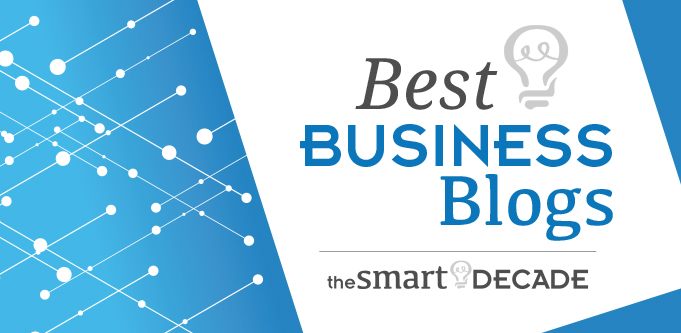Ranking Factors Or Paths
Fresh from a great Digitalks presentation in Sydney (also coming to Melbourne this Friday) where I demonstrated how brand influences search rankings via a variety of factors that you can control.
What I learned
- Are “Ranking Factors” a thing?
- How to locate the source of your direct traffic
- Use a ranking path to achieve your goals
- Always focus on the customer
- Tune your performance with technical SEO
Transcript
Welcome back Rankers. How are you? I had an awesome time in Sydney last week. In case you missed it, I was at Digitalks in Sydney talking about how brand is influencing your search rankings. We’re doing it again this Friday in Melbourne, but I’ll give you the details on that in a second.
What is a Ranking Factor?
I wanted to talk to you today about ranking factors, alright? Because this is what we’re talking about in these talks and the definition of a ranking factor for some people is different to others, alright? People get hung up on the word. So I actually prefer to think of a ranking path for a business, not ranking factors and I’ll explain why.
By and large, ranking factors … When people refer to them, they’re usually referring to these sorts of things, right? These are things that Google has told us that are ranking factors like internal links and external links, titles, etc., but I would also add … They’ve talked about things like popularity. Gary Ilyes has told us about brand mentions and citations. So people get sort of hung up on this usually because they’re trying to work out what is the thing that they need to do to trick Google. That’s where we get into problems.
We know that SEMrush last year told us all that they found that in their studies direct traffic was the major ranking factor and they used those terms. Now, the problem with a lot of that from a lot of people’s perspective is that they got into this causation, is this correlation, where are you getting that data from? From my perspective it was like that makes sense to me because that would indicate that brand is strong because if I’m getting a lot of people coming directly to me then that would indicate that brand is strong.
What’s the source of your direct traffic?
One of the problems with direct traffic is which one of these sources is it coming from? So bookmarks used to be the main source of direct traffic or people just typing in your web address. People just typing in your web address is fine for most people if they’ve been to your site already as it’s going to get auto completed. So much of the direct traffic is actually returning traffic even though Google Analytics may not be showing that in the sessions. It might not be reflected in the sessions that it is a lot of returning traffic.
In fact, most of the direct traffic we see in Google Analytics is marked as new session. That can be for a number of reasons and one of them is that direct traffic in Google Analytics is basically a catch-all for any other traffic that doesn’t have referral data. So say for instance, if you’re coming in from Facebook when you click, it will send data to the server that says I’m going to you from this particular link on Facebook. Now if it doesn’t have any of that stuff or if it doesn’t have any sort of campaign coding around it, UTM codes those sorts of things, Google will drop it into direct traffic.
So this includes things that they call Dark Social which is things like I share links via Scott, I share a link via WhatsApp, I share a link via Messenger, SMS, email, and all of these sources are not going to get tracked. But by and large, they are indications that the user is coming directly to your site because they want to and they know who you are. Usually if it’s coming via Dark Social it’s come with a recommendation right, from a friend, so it’s stronger traffic.
Tune your brand
But I would say that in all these cases one way to increase these is by building a business in your brand and focusing on your brand and that’s what we’re talking about. So for me the ranking factors, I don’t give a rat’s fat clacker because it’s not what we’re trying to do. We’re not trying to trick Google and as I said to the crew in Adelaide last, well two weeks here, and Gary Ilyes was in the audience there and thank you Gary for fixing my rankings. I explained to him that it was ridiculous, at the conference, that StewArt Media was ranking number five for search console and we’d had 10,000 impressions and only four clicks and it was ridiculous that we should be ranking with that. He’s fixed it by the looks of it because we no longer rank for search console. Thanks Gary.
But I encourage people to think about a ranking path. How are you going to get the rankings that you want? What we know now is that what Google rewards is, yes it does reward all that stuff, but why is it rewarding that stuff? That’s the question you have to ask. Why does it reward those things and for me it’s because it’s a great user experience and Google has made no secret of that. They’re looking for the most relevant results for the user and if they can provide that and they can send users to a site, to sites that have a great experience for them, people are going to keep using Google. That’s what the game is here. The same applies for AdWords as it does for organic. What we encourage people to do as well is to focus on the customer.
So that doesn’t mean ignoring technical things, like this graph here. So we’ve seen in this and this is the first eleven days in May, versus the first eleven days in March. The reason I’ve excluded April and this is the client who had a massive sale and in April and the data is skewed and we’re also doing other stuff in April. But this is March before the fact and May is after the changes. This is the one I showed you a few weeks back where the Googlebot was not getting into, well it was only getting into about 10% of the site. That was because the server, or the CMS I should say more accurately, was having a problem with some of the Googlebots and it was intermittently, temporarily redirecting them. You would have these situations where the Googlebot would be intermittently 302’d to another page and then later on it wouldn’t be. That basically resulted in most of its content not being indexed.
It took me a while to find this because we had to go through a lot of tests and a lot of rigmarole. We eventually found that the problem was that the desktop bot was being redirected because of a plugin or a feature in Magento which was user agent verification. We switched that off and that fixed everything.
The result of that is 32% more traffic. Then over here you can see that’s resulted in 61% more revenue or if you can’t see there, if that’s slightly off screen for you, that’s about $60,000 to $95,000. That’s a significant chunk of change. That’s just organic traffic, right? Because this is based on what’s happened with the bot.
If you focus on the customer and what we can see here is this is what happens in this situation. You’ve got to do your good technical SEO. I’m not saying you hurt your dime, but that is the same way as you need to tune your car if it’s your main vehicle for business. That’s your brand, right? So tune your brand.
Here we’ve got 181 clicks, 2500 impressions and in the same period that we’ve just shown in the Google Analytics we’ve had 1 click and 162 impressions. You can see here, average position now for this particular key word is number seven and it was forty-six or probably fifty. Maybe even lower. Basically why that has happened is because Google could now crawl the site and it can see the content it needs to see.
What was happening is that this page down here was actually the home page and during the period that, that first period of March you can see there, it’s had one click but it’s had in that period 155 impressions. So what that meant was it was the home page that was displaying for this particular keyword, even though there was a target page internally. Google didn’t know that. Once the crawl went up and the crawl rate went up and it could start seeing things, it picked up the target page properly. That’s the one now getting all the clicks and that’s the one now getting all the impressions.
So now, in May, it’s getting 2500 impressions and the other one is only getting 13 impressions, so that one’s just dropped right off. That will continue to grow. That’s just one key phrase, right? That’s happened with a bunch of key phrases, which is why we’re seeing this 61% addition in revenue.
That’s why I say focus on the customer, but be aware of good technical SEO because that is how we are going to not… You don’t want to trick Google, but you basically just want to get ahead of the curve. I just want to show you one other thing before we go today. Not that story on Google being sneaky. Here’s another one.
So I forget, we’ve got Retail Global at the end of this month. It’s the best e-commerce conference in the country. Heaps of speakers. Over a thousand attendees. I think tickets, there’s still some available, but you better be quick because I think this is probably the biggest year there’s been. So end of May, go look it up, Retail Global. Awesome conference. Best retail conference in the country and then this Friday, if you missed out on the presentation in Sydney for Digitalks, I’m giving it again this Friday, 18th of May at the Docklands. Just Google “Jim Stewart’s Digitalks Melbourne” and you will find this link here at Event Brite.
Hopefully that’s helpful. Hopefully we’ll see you on Friday if you’re in Melbourne and we’ll see you next week. Thanks very much. Bye.

Jim’s been here for a while, you know who he is.


